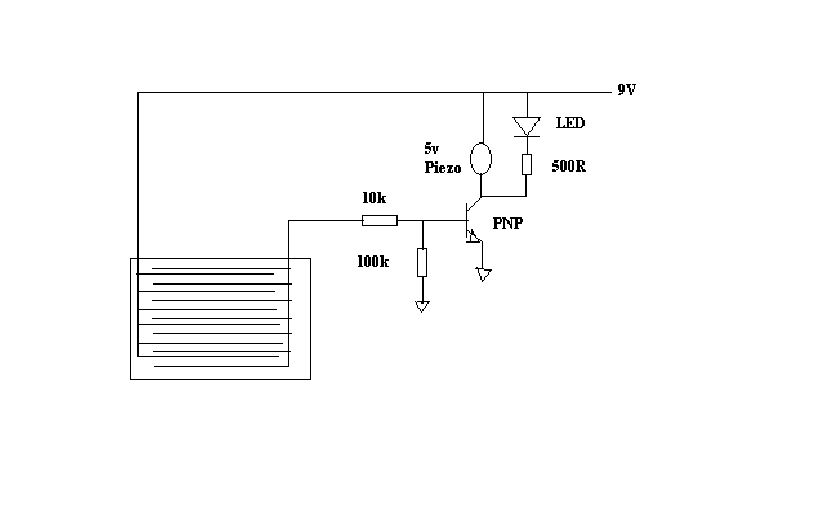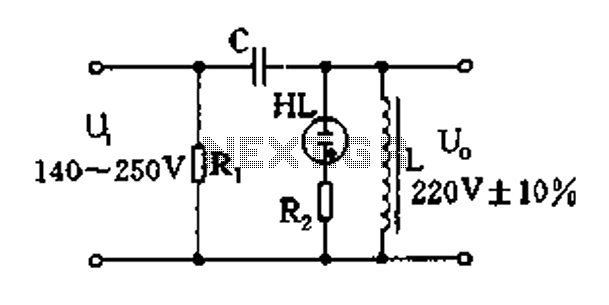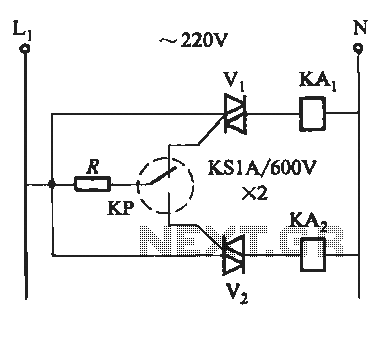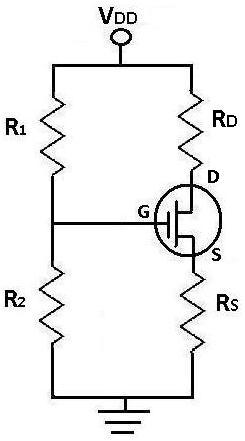
Simple Absolute Value Circuit
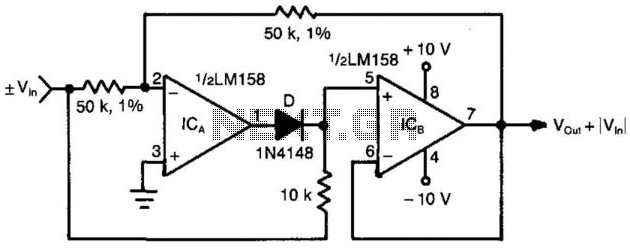
When the input voltage is positive, the output of ICA is negative, resulting in diode D not conducting; therefore, the output of ICB is positive. Conversely, when the input is negative, the output of ICA becomes positive. Diode D conducts, causing the absolute value, represented as a positive voltage, to appear on the non-inverting input of ICB and at the circuit's output. The dynamic range of the circuit spans from zero to the saturation point of the op-amp. The bandwidth is influenced by the characteristics of the diode and the high-frequency performance of the op-amp.
The described circuit utilizes operational amplifiers (op-amps) to create a voltage rectification and scaling mechanism. In this configuration, ICA serves as an inverting amplifier, while ICB functions as a non-inverting amplifier. The behavior of the circuit is contingent upon the polarity of the input voltage.
When the input voltage is positive, ICA outputs a negative voltage. This negative output prevents diode D from conducting due to reverse bias, leading to a positive output from ICB. Conversely, when the input voltage is negative, ICA outputs a positive voltage. This positive output forward-biases diode D, allowing it to conduct. As a result, the absolute value of the input voltage appears as a positive voltage on the non-inverting input of ICB, which then amplifies and outputs this value.
The dynamic range of the circuit is critical, as it determines the range of input voltages over which the circuit can accurately process signals without distortion. The upper limit of this range is defined by the saturation voltage of the op-amp, beyond which the output will no longer reflect changes in the input. The bandwidth of the circuit is also an important parameter, as it dictates the frequency response. The characteristics of the diode, including its forward voltage drop and reverse recovery time, along with the op-amp's slew rate and gain-bandwidth product, play significant roles in determining the overall performance of the circuit.
In summary, this circuit effectively rectifies and scales input voltages, providing a versatile solution for various electronic applications. Its design considerations, including dynamic range and bandwidth, are essential for ensuring reliable operation across a wide range of conditions. When an input voltage is positive, the output of ICA is negative and diode D does not conduct; hence the outp ut of ICB is positive. On the other hand, when the input is negative, the output of ICA is positive. D will conduct and cause the absolute value, expressed as a positive voltage, to appear on the noninverting input of ICB and on the circuit"s output. The circuit"s dynamic range extends from zero to the point at which the op amp saturates. The bandwidth is determined by the characteristics of the diode and the high-frequency performance of the op amp.
The described circuit utilizes operational amplifiers (op-amps) to create a voltage rectification and scaling mechanism. In this configuration, ICA serves as an inverting amplifier, while ICB functions as a non-inverting amplifier. The behavior of the circuit is contingent upon the polarity of the input voltage.
When the input voltage is positive, ICA outputs a negative voltage. This negative output prevents diode D from conducting due to reverse bias, leading to a positive output from ICB. Conversely, when the input voltage is negative, ICA outputs a positive voltage. This positive output forward-biases diode D, allowing it to conduct. As a result, the absolute value of the input voltage appears as a positive voltage on the non-inverting input of ICB, which then amplifies and outputs this value.
The dynamic range of the circuit is critical, as it determines the range of input voltages over which the circuit can accurately process signals without distortion. The upper limit of this range is defined by the saturation voltage of the op-amp, beyond which the output will no longer reflect changes in the input. The bandwidth of the circuit is also an important parameter, as it dictates the frequency response. The characteristics of the diode, including its forward voltage drop and reverse recovery time, along with the op-amp's slew rate and gain-bandwidth product, play significant roles in determining the overall performance of the circuit.
In summary, this circuit effectively rectifies and scales input voltages, providing a versatile solution for various electronic applications. Its design considerations, including dynamic range and bandwidth, are essential for ensuring reliable operation across a wide range of conditions. When an input voltage is positive, the output of ICA is negative and diode D does not conduct; hence the outp ut of ICB is positive. On the other hand, when the input is negative, the output of ICA is positive. D will conduct and cause the absolute value, expressed as a positive voltage, to appear on the noninverting input of ICB and on the circuit"s output. The circuit"s dynamic range extends from zero to the point at which the op amp saturates. The bandwidth is determined by the characteristics of the diode and the high-frequency performance of the op amp.
